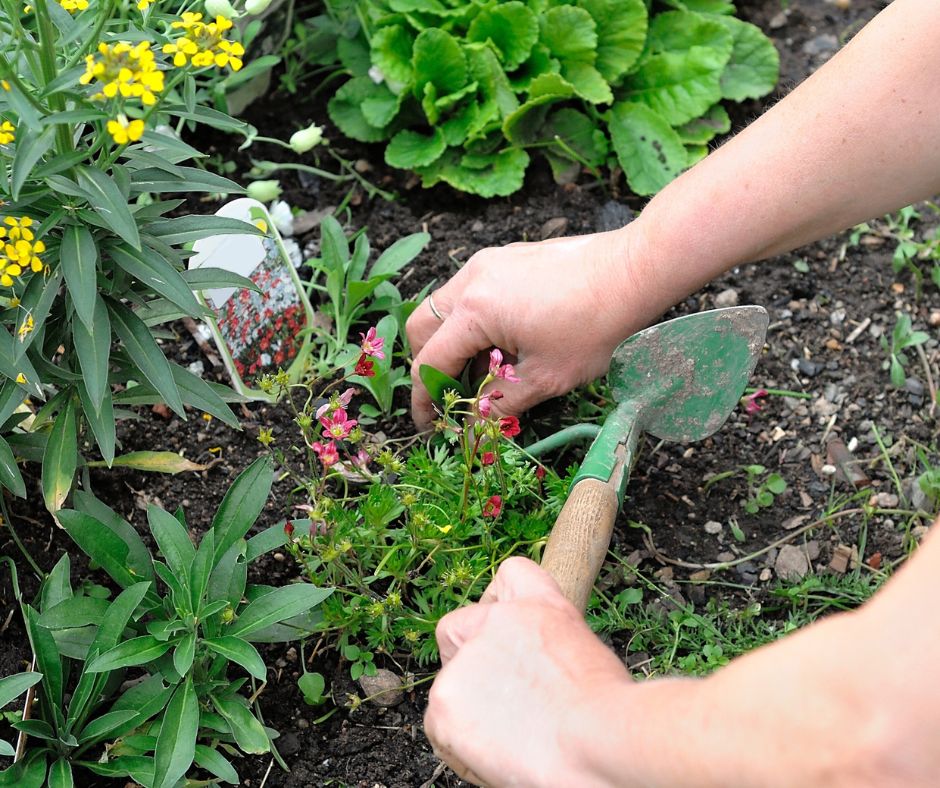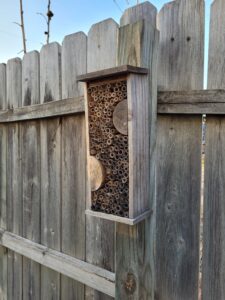
“What you plant today, you will harvest tomorrow” – Og Mandino
It’s that time again! Garden season! I always write about gardening, don’t I? Well it’s because it’s the thing that brings me peace and satisfaction. It’s a very sensory hobby of mine: the feel of the warm crumbly soil or the rich moist earth; the bright red flashes of tomatoes, strawberries and peppers ripening on the vine; the gentle buzz of garden friends bobbing from flower to flower; the way you can smell garlic growing (if you know, you know) and the delicious taste of the fruits of your labor.
I feel like this Off The Shelf is going to be some different kinds of gardening tips. If you read anything I did last year, it was full of basic and practical tips, general advice and garden care. This year I want to take a different approach. I want to talk about making your garden your best friend instead of something to be conquered.
Too often we think that if we do everything right, follow all the gardening guides, and plant all the right seeds at the right time, everything will be perfect. Well, I’m here to tell you that sometimes the weather doesn’t cooperate and sometimes your dog runs straight through your beds and knocks all your sunflowers over. It’s easy to think that your garden has failed you, but in reality, it’s just got a mind of its own. It’s a part of nature (and so are you). It just so happens to be a little fenced-in slice of nature.

Friends With/Of Nature
What’s the difference between a good bug and a bad bug? Is there even such a thing? What about rabbits? Cute bunnies are fine and well when they stick to eating my dandelions, but the instant they turn their attention to my beans? That’s one bad bunny. What I’m getting at is that what we call garden pests are just little guys in the wrong place at the wrong time. It’s easy to fence everything off and douse the whole garden in repellent and insecticide: maybe get a dog to chase off the bunnies (guard your sunflowers!). Really turn your garden into a battleground littered with all sorts of buggy bodies. However, I’d like to offer some gentler solutions.
It’s time to make some friends in the garden. Ladybugs are cute, right? Wrong! Especially if you’re an aphid or any other type of little bug that likes to frequent gardens. They’re actually vicious little predators. The veritable kings of the garden jungle. They are also our best defense against plant-sucking garden vampires like aphids, mealybugs and whiteflies.
Other bugs that make excellent garden protectors are lacewings, soldier beetles, parasitic wasps and praying mantises, but you might ask how do I get these guys to visit my garden? Can I just hire some bugs to visit my garden for a while? Kinda… While you CAN order these insects from the internet to introduce to your space, the easiest way to keep your new friends around is to make sure your garden is welcoming for them.
You’ve probably seen birdbaths, but have you ever considered putting water out for bugs? It doesn’t take much, just a little saucer with some pebbles so they can get in and out without drowning. This will also encourage pollinators to visit like bees and butterflies: a double win! You can also buy or build cute little bug hotels from broken pottery and stones, sticks and other normally trashed objects that bugs love to snuggle into. Here’s a super simple one of mine intended for solitary bees.

Bad bugs hate most herbs, while we find them delicious, so take your cooking up a notch and try your hand at growing fresh herbs. A fun tip is to keep your herbs in potted plants so you can move them around your garden targeting problem areas where the bad bugs are found. Not all garden plants have to just benefit you. You can also encourage good bugs to make your garden their home by planting plants that they like. Alyssum and catmint are known to draw lacewings and ladybugs while rosemary and many members of the mint family attract beetles. Plants with flowers invite pollinators. Additionally planting Marigolds, petunias, and chrysanthemums nearby repel bad bugs and they look pretty too.
What’s my secret weapon?
Someone once told me that a sure sign of an unhealthy garden is sterile soil. No life, no movement, no scuttling and crawling is a big indicator of a garden separated from nature itself. My biggest ally in this is… dun dun dun! Dirt!
This one’s for the long game. It’s not a quick fix, nor is it going to offer immediate answers. Cultivating healthy and rich soil is the single most beneficial thing you can do long-term for your chunk of land. Healthy soil means healthy plants and healthy plants are naturally more disease and pest resistant. There are generally two big key ingredients to this process. Compost and Time. Compost brings in the good bugs, and with lots of time, they improve soil quality by enriching it with their poop. This is why those kill-all types of insecticides are detrimental to the health of your garden.
You can buy compost at most hardware stores, but the easiest way is to just make it yourself. Table scraps are usually what makes your garbage can the stinkiest so why not separate them and add them to your garden? You can bury scraps directly into the soil or add it to a compost bin. I’m a big fan of pile it up and leave it alone, but there are also tons of different types of composting containers out there. It’s not terribly important how you get your compost, but adding this nutrient-rich material into your soil mix will not only improve your plants directly, it’ll invite lots of beneficial bugs into the space like worms and roly polys (pill bugs or Armadillidiidae if you want to be fancy with it): literally improving your relationship with your garden from the ground up by sharing your dinner with it!
“The height of cultivation always runs to simplicity-” Bruce Lee
Last Friendship Thoughts
Bad puns aside, I have a few more tips for making your garden your best friend. Spend time with it. It may sound a little too simple, but instead of just enjoying the fruits of your labor, why not enjoy it to the fullest extent? Take your morning coffee in your garden. Design a nice space to sit and relax. Put down a step stone trail to wander and enjoy while you listen to the visitors that pass through. Birds will also love visiting all the delicious bugs you have around. Hear the squirrels bicker with each other in the trees. Really get to know what pieces of nature your space takes up. Try to identify the “weeds” that pop up before you pluck them. Sometimes you’ll find out it’s not a weed at all. I have rogue sunflowers all over my backyard because of my dog.
Try something new. Gardening doesn’t have to be just what produces the best and most perfect results. Grow the flowers you love. Cultivate the veggies you’d like to learn to cook with. Come visit our seed library and snag up some garden experiments. Maybe you’ll find your new garden favorite. Discover new uses for plants you already have. Did you know that beet greens are just as tasty as spinach? Pea leaves can be used in salads and baby sunflower sprouts are quite delicious!
Customize the space. Perhaps it seems silly to paint your outdoor trellises, but you’d be surprised what a fun simple flash of color can add. Kudos to you if you also want to build your own trellises. They’re a pretty simple fun project that can be done with a few hand tools. Adding garden art can really designate your space as something special and make it feel personalized. Even something as simple as signage letting onlookers know where your spinach ends and your beets begin. A “no bunnies” sign can really let them know you mean business. The point is to be you and let your garden reflect its caretaker. Whatever you do, love your garden and it’ll love you back. Happy planting!

About The Author: Rebecca
Rebecca is a circulation clerk here at Salina Public Library. She has lived in Salina since shortly after she received her B.A from Bethany College in 2010. She graduated with a double major in English and a contract major in Philosophy of the 19th Century. She enjoys reading about trees, talking about plants, and nature walking on the trails around Salina. When she's not here you can find her thrifting, composting and tracking down a good coffee. She welcomes any garden pictures and can be reached at circ.rebecca@salinapublic.org.
More posts by Rebecca